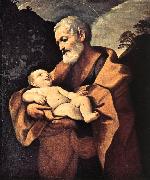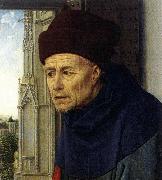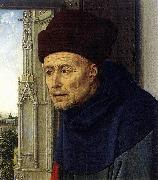
Oil On
Canvas, Real Flavor of Old Masters
|
RENI, Guido
|
|||
|
|
|||
| Italian Baroque Era Painter, 1575-1642 Italian painter, draughtsman and etcher. He was one of the greatest and most influential of the 17th-century Italian painters, whose sophisticated and complex art dominated the Bolognese school. A classicizing artist, deeply influenced by Greco-Roman art and by Raphael but also by the mannered elegance of Parmigianino's paintings, he sought an ideal beauty; his work was especially celebrated for its compositional and figural grace. In his religious art he was concerned with the expression of intense emotion, often charged with pathos; according to his biographer Malvasia, he boasted that he 'could paint heads with their eyes uplifted a hundred different ways' to give form to a state of ecstasy or divine inspiration. | |||
|
|
|||
|
|
St Joseph new1/RENI, Guido19.jpg Painting ID:: 8882 Visit European Gallery |
Oil on canvas Basilica dei Santi Giovanni e Paolo, Venice | |
Height Width |
INS/CM |
||
|
X |
|
||
|
|
|||
|
WEYDEN, Rogier van der
|
|||
|
|
|||
| Netherlandish Northern Renaissance Painter, ca.1400-1464 major early Flemish master, known also as Roger de la Pasture. He is believed to have studied with Robert Campin. His early works also show the influence of Jan van Eyck. Van Eyck, however, had been a master at objective rendering of detail, whereas Roger in his work portrayed emotions with an assurance that has not been surpassed. His ability to depict piety is reflected in the early masterpiece Descent from the Cross (c.1435; Prado); he depicted with significant restraint the profound grief of the mourners grouped around the tragic figure of Jesus. His composition strongly affected later representations of the theme. Roger became City Painter in Brussels in 1436. He then produced a series of undated altarpieces including the Last Judgment (hospital, Beaune), the Braque Triptych (Louvre), Crucifixion with Donors (Vienna), and Adoration of the Magi (Berlin), which vary in execution from a stress on sumptuous details to a more sculptural rendering of the figures. Roger is believed to have made a pilgrimage to Italy in the holy year 1450. Whether this supposed excursion had any effect on his style is much debated. It has been shown that his Entombment (Uffizi) bears an affinity to the Tuscan treatment of the subject, particularly by Fra Angelico, and that Roger's Virgin and Child with Saints (Frankfurt) has a strong resemblance to the Italian religious art of the day. His style is, however, highly individual. His religious paintings and his portraits are characterized by a straightforward monumentality. The portraits, such as that of a young lady (National Gall. of Art, Washington, D.C.) and of Francesco d'Este (Metropolitan Mus.) exhibit a simple clarity of contour and psychological penetration. Other notable works are his St. Luke Painting the Virgin, of which a version or replica is in the Museum of Fine Arts, Boston, the Crucifixion | |||
|
|
|||
|
|
St Joseph new21/WEYDEN, Rogier van der-828365.jpg Painting ID:: 63864 Visit European Gallery |
1445 Oil on oak panel, 21 x 18,3 cm Gulbenkian Foundation, Lisbon This fragment was sawn out of the same large altarpiece as the Mary Magdalene in the National Gallery, London. The aged Joseph stood behind the Magdalene; the lower part of his body can still be seen in the fragment. The exterior of the building in which the scene took place was richly ornamented with Gothic decoration, like a church.Artist:WEYDEN, Rogier van der Title: St Joseph Painted in 1401-1450 , Flemish - - painting : religious | |
Height Width |
INS/CM |
||
|
X |
|
||
|
|
|||
|
Rogier van der Weyden
|
|||
|
|
|||
| Rogier van der Weyden 1399/1400 - 1464 was the most important representative of Netherlandish painting or Northern Renaissance ... is, with Jan van Eyck, considered one of the greatest exponents of the school of Early Netherlandish painting. Rogier van der Weyden was born in Tournai as 'Rogier de le Pasture' (Roger of the Pasture) in 1399 or 1400. His parents were Henri de le Pasture and Agnes de Watr??los. The family had settled before in the city of Tournai where Rogiers father worked as a 'maître-coutelier' (knife manufacturer). In 1426 Rogier married Elisabeth, the daughter of the Brussels shoemaker Jan Goffaert and his wife Cathelyne van Stockem. Rogier and Elisabeth had four children: Cornelius, who became a Carthusian monk, was born in 1427, a daughter Margaretha in 1432. Before 21 October 1435 the family settled in Brussels where the two younger children were born: Pieter in 1437 and Jan the next year. From the second of March 1436 onwards held the title of 'painter to the town of Brussels' (stadsschilder) a very prestigious post because Brussels was at that time the most important residence of the splendid court of the Dukes of Burgundy. It was at the occasion of his move to the Dutch-speaking town of Brussels that Rogier began using the Dutch version of his name: 'Rogier van der Weyden'Little is known about Rogier's training as a painter. The archival sources from Tournai (completely destroyed during World War II, but luckily partly transcribed in the 19th and early 20th century) are somewhat confusing and have led to different interpretations by scholars. From a document it is known that the city council of Tournai offered wine in honour of a certain 'Maistre Rogier de le Pasture' on March the 17th 1427. However, on the 5th of March of the following year the records of the painters' guild show a certain 'Rogelet de le Pasture' entered the workshop of Robert Campin together with Jacques Daret. Only five years later, on the first of August 1432, Rogier de le Pasture obtains the title of 'Master' (Maistre) as a painter.[1] Many have doubted whether Campin's apprentice 'Rogelet' was the same as the master 'Rogier' that was offered the wine back in 1426. The fact that in 1426-1427 Rogier was a married man in his late twenties, and well over the normal age of apprenticeship has been used as an argument to consider 'Rogelet' as a younger painter with the same name. In the 1420's however the city of Tournai was in crisis and as a result the guilds were not functioning normally. The late apprenticeship of Rogier/Rogelet may have been a legal formality. Also Jacques Daret was then in his twenties and had been living and working in Campin's household for at least a decade. It is possible that Rogier obtained an academic title (Master) before he became a painter and that he was awarded the wine of honour on the occasion of his graduation. The sophisticated and 'learned' iconographical and compositional qualities of the paintings attributed to him are sometimes used as an argument in favour of this supposition. The social and intellectual status of Rogier in his later life surpassed that of a mere craftsman at that time. In general the close stylistical link between the documented works of Jacques Daret, and the paintings attributed to Robert Campin and Rogier van der Weyden is considered as the main argument to consider Rogier van der Weyden as a pupil of Robert Campin. The last mention of Rogier de la Pasture in the financial records of Tournai, on October 21, 1435, lists him as demeurrant ?? Brouxielles ('living in Brussels'). At the same time, the first mention of Rogier de Weyden is made as the official painter of Brussels. Therefore Rogier de la Pasture and Rogier Van der Weyden are thought to be one and the same painter. The post of city painter was created especially for Van der Weyden and was meant to lapse on his death. It was linked to a huge commission to paint four justice scenes for the 'Golden Chamber' of Brussels City Hall.[2] Different properties and investments are documented and witness his material prosperity. The portraits he painted of the Burgundian Dukes, their relatives and courtiers, demonstrate a close relationship with the elite of the Netherlands. The Miraflores Altarpiece was probably commissioned by King Juan II of Castile, since Juan II donated it to the monastery of Miraflores in 1445. | |||
|
|
|||
|
|
St Joseph new25/Rogier van der Weyden-468963.jpg Painting ID:: 92132 Visit European Gallery |
1445(1445) Medium oil on oak panel Dimensions Height: 21 cm (8.3 in). Width: 18.3 cm (7.2 in). cyf | |
Height Width |
INS/CM |
||
|
X |
|
||
|
|
|||









